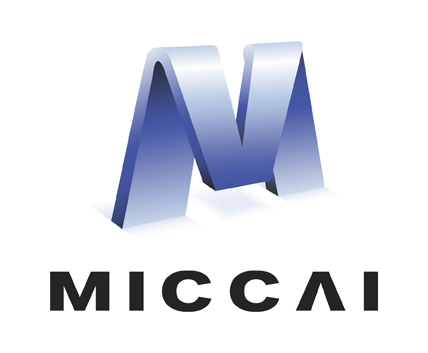Abstract
Quantitative diffusion weighted MRI in the abdomen provides important markers of disease, however significant limitations exist for its accurate computation. One such limitation is the low signal-to-noise ratio, particularly at high diffusion b-values. To address this, multiple diffusion directional images can be collected at each b-value and geometrically averaged, which invariably leads to longer scan time, blurring due to motion and other artifacts. We propose a novel parameter estimation technique based on self supervised diffusion denoising probabilistic model that can effectively denoise diffusion weighted images and work on single diffusion gradient direction images. Our source code is made available at https://github.com/quin-med-harvard-edu/ssDDPM
Access this chapter
Tax calculation will be finalised at checkout
Purchases are for personal use only
References
Afaq, A., Andreou, A., Koh, D.: Diffusion-weighted magnetic resonance imaging for Tumour response assessment: why, when and how? Cancer Imag. 10(1A), S179 (2010)
Aharon, M., Elad, M., Bruckstein, A.: K-SVD: an algorithm for designing overcomplete dictionaries for sparse representation. IEEE Trans. Signal Process. 54(11), 4311–4322 (2006)
Bhujle, H.V., Vadavadagi, B.H.: NLM based magnetic resonance image denoising-a review. Biomed. Signal Process. Control 47, 252–261 (2019)
Caro-Domínguez, P., Gupta, A.A., Chavhan, G.B.: Can diffusion-weighted imaging distinguish between benign and malignant pediatric liver tumors? Pediatr. Radiol. 48, 85–93 (2018)
Cheng, H., et al.: Denoising diffusion weighted imaging data using convolutional neural networks. PLoS ONE 17(9), e0274396 (2022)
Dabov, K., Foi, A., Katkovnik, V., Egiazarian, K.: Image denoising by sparse 3-d transform-domain collaborative filtering. IEEE Trans. Image Process. 16(8), 2080–2095 (2007)
Fadnavis, S., Batson, J., Garyfallidis, E.: Patch2self: denoising diffusion MRI with self-supervised learning. Adv. Neural. Inf. Process. Syst. 33, 16293–16303 (2020)
Haldar, J.P.: Low-rank modeling of local \( k \)-space neighborhoods (loraks) for constrained MRI. IEEE Trans. Med. Imag. 33(3), 668–681 (2013)
Ho, J., Jain, A., Abbeel, P.: Denoising diffusion probabilistic models. Adv. Neural. Inf. Process. Syst. 33, 6840–6851 (2020)
Jurek, J., et al.: Supervised denoising of diffusion-weighted magnetic resonance images using a convolutional neural network and transfer learning. Biocybern. Biomed. Eng. 43(1), 206–232(2023)
Lupu, M., Todor, D.: A singular value decomposition based algorithm for multicomponent exponential fitting of NMR relaxation signals. Chemom. Intell. Lab. Syst. 29(1), 11–17 (1995)
Nichol, A.Q., Dhariwal, P.: Improved denoising diffusion probabilistic models. In: International Conference on Machine Learning, pp. 8162–8171. PMLR (2021)
von Platen, P., et al.: Diffusers: State-of-the-art diffusion models. https://github.com/huggingface/diffusers
Ran, M., et al.: Denoising of 3D magnetic resonance images using a residual encoder-decoder Wasserstein generative adversarial network. Med. Image Anal. 55, 165–180 (2019)
Vasylechko, S.D., Warfield, S.K., Afacan, O., Kurugol, S.: Self-supervised IVIM DWI parameter estimation with a physics based forward model. Magn. Reson. Med. 87(2), 904–914 (2022)
Veraart, J., Fieremans, E., Novikov, D.S.: Diffusion MRI noise mapping using random matrix theory. Magn. Reson. Med. 76(5), 1582–1593 (2016)
Wang, Y.X.J., Huang, H., Zheng, C.J., Xiao, B.H., Chevallier, O., Wang, W.: Diffusion-weighted mri of the liver: challenges and some solutions for the quantification of apparent diffusion coefficient and intravoxel incoherent motion. Am. J. Nuclear Med. Molecular Imag. 11(2), 107 (2021)
Winfield, J., et al.: Development of a diffusion-weighted MRI protocol for multicentre abdominal imaging and evaluation of the effects of fasting on measurement of apparent diffusion coefficients (adcs) in healthy liver. Br. J. Radiol. 88(1049), 20140717 (2015)
Xiang, T., Yurt, M., Syed, A.B., Setsompop, K., Chaudhari, A.: Ddm2: self-supervised diffusion mri denoising with generative diffusion models. arXiv preprint arXiv:2302.03018 (2023)
Acknowledgements
This work was supported partially by the National Institute of Diabetic and Digestive and Kidney Diseases (NIDDK), National Institute of Biomedical Imaging and Bioengineering (NIBIB), National Institute of Neurological Disorders and Stroke (NINDS) and National Library of Medicine (NLM) of the National Institutes of Health under award numbers R01DK125561, R21DK123569, R21EB029627, R01NS121657, R01LM013608, S10OD0250111 and by the grant number 2019056 from the United States-Israel Binational Science Foundation (BSF), and a pilot grant from National Multiple Sclerosis Society under Award Number PP-1905-34002.
Author information
Authors and Affiliations
Corresponding author
Editor information
Editors and Affiliations
Rights and permissions
Copyright information
© 2023 The Author(s), under exclusive license to Springer Nature Switzerland AG
About this paper
Cite this paper
Vasylechko, S., Afacan, O., Kurugol, S. (2023). Self Supervised Denoising Diffusion Probabilistic Models for Abdominal DW-MRI. In: Karaman, M., Mito, R., Powell, E., Rheault, F., Winzeck, S. (eds) Computational Diffusion MRI. CDMRI 2023. Lecture Notes in Computer Science, vol 14328. Springer, Cham. https://doi.org/10.1007/978-3-031-47292-3_8
Download citation
DOI: https://doi.org/10.1007/978-3-031-47292-3_8
Published:
Publisher Name: Springer, Cham
Print ISBN: 978-3-031-47291-6
Online ISBN: 978-3-031-47292-3
eBook Packages: Computer ScienceComputer Science (R0)


